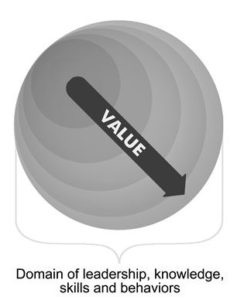An organization’s success in corporate leadership training is largely due to the quality of the people it hires and grows. This is by no means a new concept; people have always been critical parts of an organization’s success. But this success increasingly depends on more than whether individuals can achieve the tasks in their job description. Today’s workforce must also demonstrate an ability to lead themselves through shifting priorities and opportunities.
Therefore the most pressing educational need today is developing each employee’s ability to continuously learn after the professional development training programs are complete.
No matter how much effort traditional training and professional development companies put into developing top quality corporate leadership training, the extent to which its participants add value depends on their development of leadership skills and how well they develop their thinking abilities. Like any skill, proficiencies developed in effective leadership training becomes stale without effort to sustain it. Providing constant training exercises is impractical, and even if it were not, employees must be the ones to motivate themselves toward continuous improvement. This continuous motivation comes from their ability to assess gaps and limitations and their willingness to address these deficiencies.
It is the underlying changes that occur to mental models that improves the application of all other skills. No matter what skills employees are learning, managers, leaders, and consultants should ensure that the Core Abilities serve as the focal point throughout the learning and development training. All learning should lead to improved decision making and problem-solving in a collaborative manner. It is this new way of thinking and learning that creates the development of leadership skills.
Despite the increasing need for refined, multifaceted thinking, most people do not continually evolve their mental models. In the spirit of system thinking, if an organization is the sum of the thoughts of its people, then the highest leverage point for changing an organization is to change how its people think.
A key dependency is that organizations provide the initial push with executive leadership development —they get the mental ball rolling, if you will. Achieving that initial push is not easy, however. We don’t need Newton’s first law of motion to surmise that when learners’ mental model boots are stuck in concrete, the company will have a hard time gaining the momentum needed for transforming business. On the other hand, if organizations can help workers break from traditional ways of perceiving and interpreting the world, then they can build a powerful momentum.
Guided by awareness, the Core Thinking Practices set in motion an effect that shapes mental models. Starting with the Core Abilities and moving upward, the Practices trigger the Abilities as systems-level questions probe the situation to form a big-picture perspective. The information gathered and insights generated from the Practices inform the Value Skills. As decisions are made, the Practices are once again employed to determine the effectiveness of the decisions and expose additional information about the underlying system. These data points are fed back to the Abilities for deeper evaluation and reflection, further refining mental models. The result of this cycle is improved transfer of learned skills. Most importantly, this effect occurs outside of structured learning and development training.
Here’s how these principles are applied to corporate leadership programs. In the diagram below, the largest outer circle represents the domain of leadership knowledge, skills, and behaviors. However, while people may know about all competency skills and appreciate how important those skills are to becoming good leaders, their ability to apply those skills will be limited to their mental models and capacity to apply the Core Abilities.

Each of the gradient circles represents an expansion of the mental models and Core Abilities that result each time leaders evolve their mental models and refine their Core Abilities through executive leadership development. By doing so, they further improve their capacity towards the development of leadership skills and, in turn, increase value as a leader.
Michael Vaughan is the CEO of The Regis Company, a global provider of custom business simulations and experiential learning programs. Michael is the author of the books The Thinking Effect: Rethinking Thinking to Create Great Leaders and the New Value Worker and The End of Training: How Business Simulations Are Reshaping Business.
